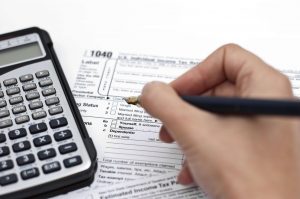Content

Indirect costs are expenses that are not easily attributable to the production of a good or service. These are generally costs incurred in the process of delivering the good or value proposition, but are not directly related to production. This might include employee salaries, storage, marketing, etc. When nonmanufacturing activities repeat and result in a homogeneous product, standards may be used. The manner of estimating and employing standards can be similar to that applicable with a manufactured product. For instance, standards may be used for office personnel involved in processing sales orders and a standard unit expense for processing a sales order may be derived.
For each cost pool, bases of apportionment are chosen. Bases of apportionment are some factors or variables that allow us to allocate costs in a cost pool to cost objects. The selection of the base of apportionment should be on causal-and-effects grounds, which mean it should be a cost driver.
- How much does this differ from the actual direct labor cost?
- Organizations have additional costs beyond what it takes to actually make a product.
- There are three types of manufacturing production process; make to stock , make to order and make to assemble .
- The sum of direct materials cost, direct labor cost and manufacturing overhead cost is known as manufacturing cost.
- No strong decrease in overhead spending for these eight companies was apparent.
- Indirect material costs- The cost of materials necessary to manufacture a product that are not easily traced to the product or not worth tracing to the product.
The book value of the old equipment is one of the most important factors to consider in deciding to replace it. They are matched to a specific time period’s revenues rather than being included in the cost of goods sold. Manufacturing costs are directly attributed to the products manufactured . Manufacturing costs form part of cost of goods sold and are carried as part of inventory in the balance sheet till the inventory is sold out. Marketing and advertising costs – marketing campaign costs, advertising agency fees etc. Manufacturing costs are also known as factory costs or production costs. It is likely that you will have to estimate the cost of these activities.
How Do You Calculate Fixed Costs?
Non-manufacturing costs are accounted for in the general profit and loss account and impact the net profit of the entity. Non-manufacturing costs, on the other hand, typically constitute a lower share of the entity’s total costs. Office and administrative costs – accountants’ salaries, office electricity, Nonmanufacturing Overhead Costs stationery costs, office executives’ salaries etc. A manufacturing entity incurs a plethora of costs while running its business. While manufacturing or production costs are the core costs for a manufacturing entity, the other costs are also just as important as they too affect overall profitability.

These include rent of office space, advertising, sales commission, utilities and supplies in the office. Practically includes administrative and selling expenses. In most situations the amount of direct labor required is directly correlated with the amount of finished goods produced. For example, wages and related benefits of employees who operate machinery to produce valves represent direct labor costs for Friends Company. The more valves are to be produced, the more employees will be required to operate machinery, paint, assemble, etc. Period costs are those not related to the production of the product. Non-manufacturing costs are generally broken down into selling costs and general and administrative costs.
What Are Direct Materials?
The sum of direct materials cost, direct labor cost and manufacturing overhead cost is known as manufacturing cost. On the other hand, a product with a low gross profit may actually be very profitable, if it uses only a minimal amount of administrative and selling expense. MIXED COSTS – costs that include variable and fixed costs. The overhead includes rent , depreciation , wages of factory maintenance personnel , utilities , indirect materials .
Forces coordination among departments to promote decisions in the best interests of the company as a whole. Prepare a quarterly budgeted income statement for Patel and Company; include a column summarizing the year.
One of the main purposes of an operating budget is to ensure coordination amongst units. This is because some costs are fixed and have to be paid whether you produce one unit or one thousand.
It may seem obvious that managers need to know what their costs are for products or services they sell, but in truth it may be fairly complicated to understand costs. Historical costs are usually called irrelevant costs, too. Given that they are already incurred and the management cannot reverse the expense, it becomes irrelevant to future decision making. It is classified into two, depending on whether the products are sold or not.
- The predetermined overhead rate is multiplied by the actual allocation base incurred by a job to find ______.
- Direct labor costs are part of cost of goods sold or cost of services as long as the labor is directly tied to production.
- MANUFACTURING COSTS – these include all costs used in the manufacture of the products.
- Whenever a product is returned, and the customer is reimbursed, it gets recorded in an account called sales returns and allowances.
- The labor cost that can be physically and conveniently traced to a unit of finished product is called direct labor cost or touch labor cost.
- Therefore most of the companies prefer employing either of direct or step down methods.
Increases in direct proportion to the number of hours the lawn equipment is operated. The gasoline cost would be classified as variable if the total gasoline cost increases when the volume increases and the total gasoline cost decreases when the volume decreases. Overhead spending for the eight companies averaged 20% of revenues, allocated 5% to R&D and 15% to selling and administrative (S&A) costs. The specialty https://www.bookstime.com/ chemical companies spent more on S&A than did the commodity chemical producers. No strong decrease in overhead spending for these eight companies was apparent. The budget committee begins the budgeting process by reviewing information from the year before. All board members and office staff are given spreadsheets showing last year’s results and are asked to provide input for the next budget period.
Traditional Inventory System
Some examples of bases of apportionment include floor area, net book value of fixed assets and number of employees. Floor area is usually used for rent and rates overhead.
- This may include salaries of all the employees that are not the part of the manufacturing process such as president, vice president, managers and other such employees.
- All manufacturing costs that are easily traceable to a product are classified as either direct materials or direct labor.
- Most items in the table above are self-explanatory, so they don’t require further explanation, while indirect materials and labor may benefit from further explication.
- All these expenses are recorded in the period they were incurred.
- For example, cement is a finished product for manufacturers of cement and raw materials for companies involved in construction business.
- What about the office rent for the vice president of manufacturing?
- When all of a company’s job cost sheets are viewed collectively, they form what is known as a ______.
The market value of the old equipment is a sunk cost and should not be taken into account in deciding whether or not to replace it. The old equipment should be evaluated for possible replacement only as it nears the end of its useful life.
Product
A period cost is charged to expense in the period incurred. This type of cost is not included within the cost of goods sold on the income statement.

Actual manufacturing overhead cost, and applied nonmanufacturing cost. The process used to assign overhead costs to products is called overhead _________. Average manufacturing overhead cost per unit usually varies from one period to the next because ______. In order to obtain the product cost under absorption costing, first the per-unit costs are added together . After that, per-unit costs need to be obtained from the fixed overhead so that the per-unit overhead can be applied to the per-unit cost. Product costs are treated as inventory on the balance sheet and do not appear on the income statement as costs of goods sold until the product is sold.
4 Budgeting In Nonmanufacturing Organizations
The historical data indicate that R&D costs, as measured by employment and funding, have generally been exempt from overhead cost reduction pressures. The control phase of the budgeting process requires that all expenditures be in accordance with the budget. Any expenditure exceeding the budget by more than $25 must be approved by the board of directors. A financial report comparing actual revenues and expenditures with budgeted revenues and expenditures is submitted to the board of directors monthly. Yearly, a small not-for-profit symphony in California establishes an operating budget with revenues totaling $200,000. The symphony’s treasurer oversees the budget committee, which is made up of three board members.
SkyChefs, Inc., prepares in-flight meals for a number of major airlines. One of the company’s products is grilled salmon in dill sauce with baby new potatoes and spring vegetables. During the most recent week, the company prepared 4,000 of these meals using 960 direct labor-hours. The company paid these direct labor workers a total of $9.600 for this work, or$10.00 per hour.
Absorption costing includes 3 stages, namely apportionment of overheads, reapportionment or allocation of service (non-production) cost centre overheads and also absorption of overhead. Period costs are costs necessary to maintain business operations but are not a necessary or integral part of the manufacturing process. They are matched with the revenues of a specific time period rather than included in the cost of the goods sold.
The cost of materials necessary to manufacture a product that are not easily traced to the product or not worth tracing to the product. Indirect material costs- The cost of materials necessary to manufacture a product that are not easily traced to the product or not worth tracing to the product. As you can see form the list, indirect materials are an insignificant portion or not an integral part of the finished goods. Cost accounting is a form of managerial accounting that aims to capture a company’s total cost of production by assessing its variable and fixed costs. A work-in-progress is a partially finished good awaiting completion and includes such costs as overhead, labor, and raw materials. The step-down method of cost allocation enables the transfer of costs between service departments, typically to those that generate money. Explore the steps in this process, and the advantages and disadvantages of this method.
- Direct materials costs are recorded on the job cost sheet when the ______.
- Product cost can also be considered the cost of the labor required to deliver a service to a customer.
- Some costs are shared by multiple departments, or by multiple products.
- Most companies use their cost of capital to estimate the minimum return on investment required from capital investments.
- Manufacturing overhead also include cost that is more appropriately to be treated as cost of all outputs like overtime premium, cost of idle time, utilities cost.
- Direct materials are not needed, and all labor and overhead costs are included in the selling and administrative budget.
The relationship between costs and sales often is highlighted. For example, wages of custodians, maintenance people, supplies room supervisors, etc. are considered indirect labor. From this you can see that direct materials are the integral part and a significant portion of finished goods. Net sales are the result of gross sales minus returns, allowances, and discounts. They are a factor in gross profit but do not include costs of goods sold. Gross profit is typically used with companies like Tesla that need to invest significant sums in R&D, which should lead to profitability in the long term.
Purpose Of Financial Accounting, Cost Accounting, Gaap, And Ifrs
You add another 100 square feet and they give it to you for P180/ft a month. DIRECT COSTS – refer to costs that are directly traceable to a cost object. Direct labor is the human hours of physical or mental labor required to produce a product. Sales, general, and administrative expenses, which are highlighted in blue, came in at $647 million in Q versus $750 million in Q2 of 2018. Cost of revenue , which is highlighted in red, shows the company incurred approximately ~$5.4 billion in cost of revenues in Q2 2019—a jump from 2018’s ~$3.3 billion. When all of a company’s job cost sheets are viewed collectively, they form what is known as a ______.
Each boat produced incurs significant manufacturing costs. MasterCraft records these manufacturing costs as inventory on the balance sheet until the boats are sold, at which time the costs are transferred to cost of goods sold on the income statement. For a company that uses direct costs, standard inventory valuation measurement must be used to avoid miscalculation of items which will affect the direct costs of production. Direct labor and factory overhead, when added together, represent the conversion cost. Direct labor and factory overhead are called conversion costs because they are involved in converting raw materials into finished goods. Factory overhead is any manufacturing cost that is not direct materials or direct labor.
This is especially true for specific product-related commissions and promotions. Non-manufacturing costs include administrative costs, marketing and selling costs, finance costs etc. Nonmanufacturing, also known as “period” costs, consists of selling and administrative expenses. The relevance of costing to manufacturing companies is highly important to running an efficient and successful business. Identifying, separating and apportioning cost data provides management and outside decision makers valuable information on the company’s profitability and cost control systems.
Product costs are the manufacturing costs that are considered to be a cost of a product. Cost of goods sold is defined as the direct costs attributable to the production of the goods sold in a company. Learn the definition of an operating expense in business.
